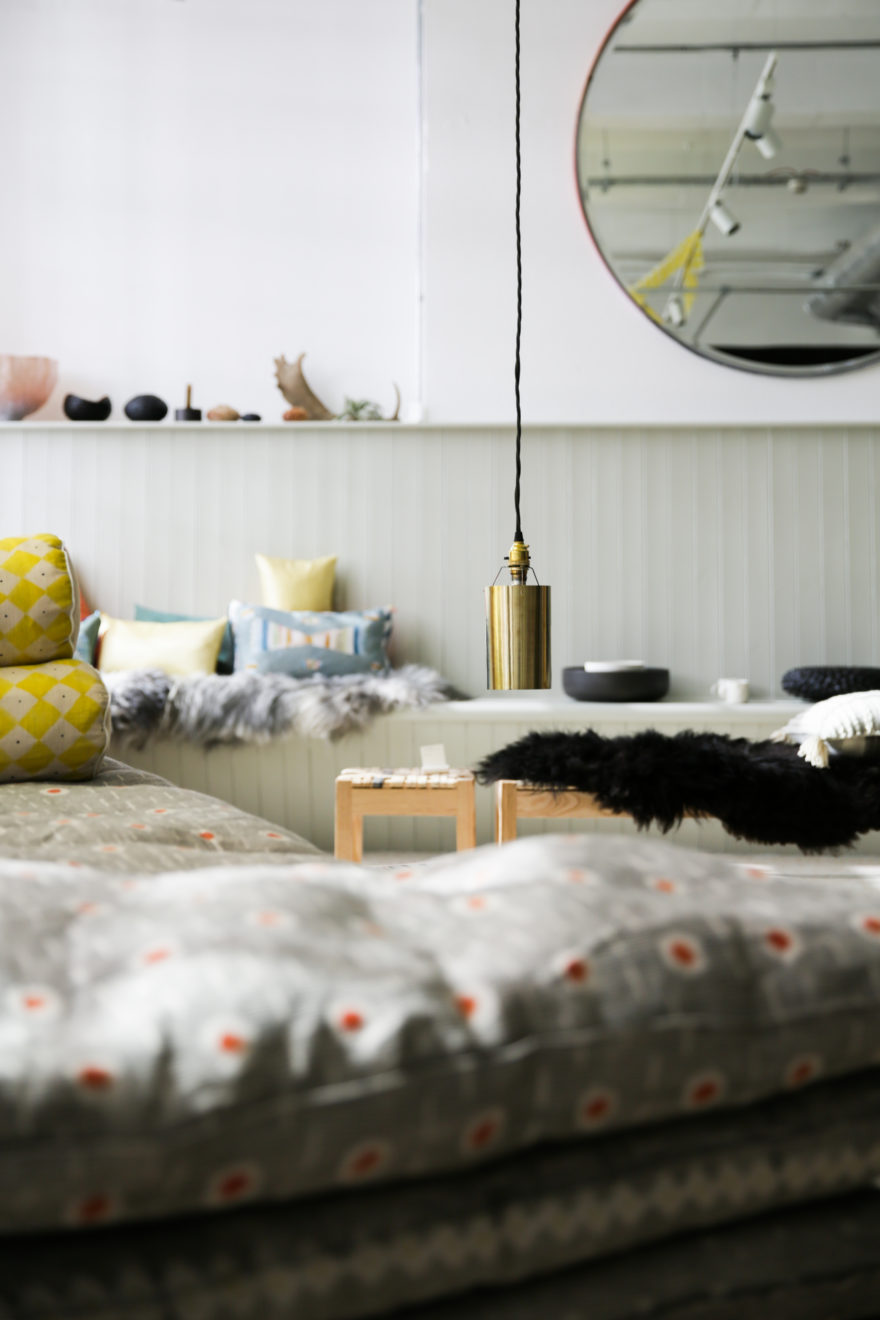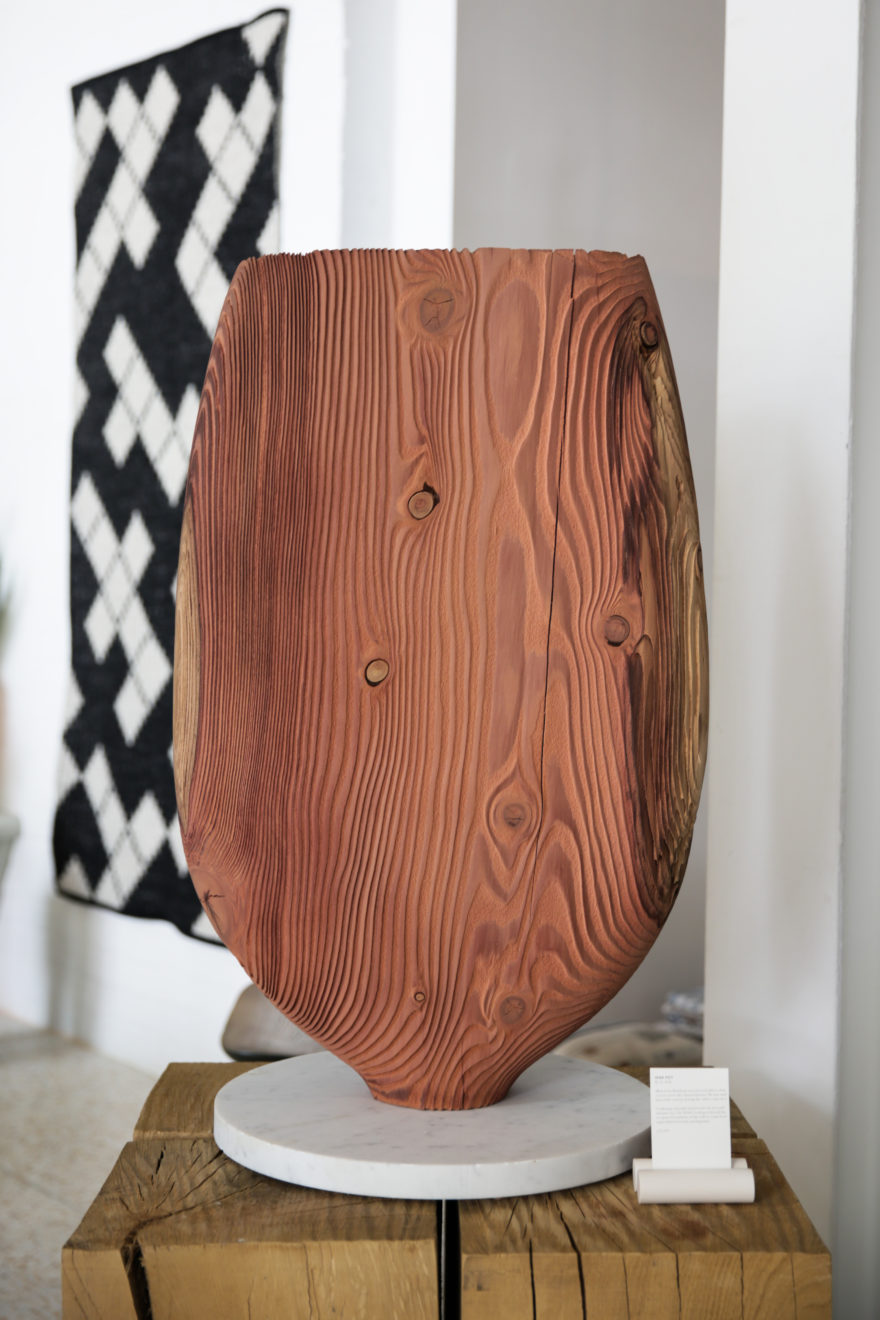The New Craftsmen – Catherine Lock
The New Craftsmen was founded in 2012 to showcase and sell the best of British craftsmanship online and in their Mayfair store. They work with over 75 craft makers and artisans to create and curate products that are firmly rooted in culture and craft. They also work with interior designers and architects to create custom and bespoke pieces. We were lucky enough to be invited to meet Catherine Lock – one of the founders of The New Craftsmen – and she told us her story.
I started my working life at Habitat which has given me a foot firmly placed in the design world. This has informed the unique, edited and curated nature of The New Craftsman, focusing on aesthetics and function. I used to travel abroad with work, visiting factories a lot. At one point whilst I was working at Sainsbury’s, I noticed that they were focusing on the provenance of the food they were selling. I could see that this would cross over into other parts of retail and that consumers would want to know about where the products they were buying had come from and the stories behind them. This inspired me to rent out my flat and go on a trip around the country visiting crafts people in their workshops and studios. Understanding the context and DNA of an object changes the way you look at them, this experience changed my life.
In 2012 we started a pop-up shop experiment. Grosvenor estates gave us use of a five-storey town house in the heart of Mayfair for six weeks. In a short space of time we had to collectively pull together people that we knew before the Christmas rush. The 2nd pop up was in a Victorian garage near the Connaught, with more time to plan we were able to be a bit more specific with our offering, leading us towards where we are today.
The biggest shift since starting the company has been finding new makers and working with them on new ideas to create exclusive pieces. An example is Gareth Neal’s straw back Brodgar chair. This was one of our first original creations and over time it’s been added to, to create a range informed by what customers want. Since then, we’ve been able to grow the commissioning side of the business, working closely with interior designers. A dedicated studio space in the current showroom allows individuals to get hands-on experience of what materials are available and to look through the portfolios of the makers so that they can work with us on creating bespoke pieces for their clients’ homes.
We find our makers quite organically, there were lots of people who we all knew from previous places we’d worked, as well as from my trip around the country. We met Georgia Kemball via an introduction from her tutor at the RCA and she very quickly got a four-page article in The World of Interiors written about her which was a great start. We attend shows and exhibitions and I continue to do mini trips. I was just in Wales with James and Tilla Waters who make beautiful hand thrown tableware. They descend from a line of great potters. Their mentor was Rupert Sperry, who learnt from Micheal Cardew, who saw functional ware being no different to art. He in turn learnt from Bernard Leach. It’s this lineage, the care they take in what they create and their level of detail that make them right for us. In a homogenised world, it is the narrative that makes something appealing. With that said, there is no point in having a great story if the work doesn’t look great so this is where the process starts, the aesthetics of the product.
It’s these stories that are important to me on a personal level as well. My favourite objects at home have stories attached to them as well as being beautiful in their own right. I travelled to Mongolia in 2000 and brought back a large basket (a habit of mine) made from steam-bent wood woven together with gut, which is used for picking up horse manure to put on the fire. Each different culture seems to have a basket, for different functions but it is a constant in people’s homes and this fascinates me on an idiosyncratic level. Another is from Devon, I met Clive Bowan (a great slipware potter) on my trip and he welcomed me in to his home for lunch and really looked after me. I have one of his bowls and it’s my favourite for really warming, hearty foods like porridge and soup, because it came from a really nice, warm place. Pottery can really change the experience of a meal which is why some of the Michelin star chefs are commissioning their own tableware. A tiny Staffordshire dog that my mother gave me on a whim reminds me of trawling through auction sales and antique shops with her, it sits on my dressing table and feels like my protector. Lastly, a 1960’s mirror designed by Colin Beales which brings a touch of modernity to my Victorian home.
‘Home’ to me is the place where you can be completely free to be you. The place where you feel that you belong and are really yourself and at ease in, regardless of whether or not it is bricks and mortar. A sense of being. That changes throughout your life as does your physical home.

When people make purchases from The New Craftsmen, I want them to connect with the object. I want them to understand that they are enabling that maker to continue doing what they’re doing as well as knowing the story behind it. I want our customers to really push people when they are commissioning something. I want people to see our makers as small businesses who will become luxury brands of the future.
Some of my better known design inspirations are Peter Zumthor, Eileen Gray, James Plumb, Tyler Hayes (BDDW and specifically M Crow & Co). I wish for the world to cut back on things, to pare back, to look at unknown designers and makers who make functional objects that are formed purely by their function. I would like to see people getting away from the identikit and being enabled to create true expressions of their individualism. Investing in individuality is the starting point for people’s homes, looking at the things that make up the fabric of the building is just as important as the furnishings.


















